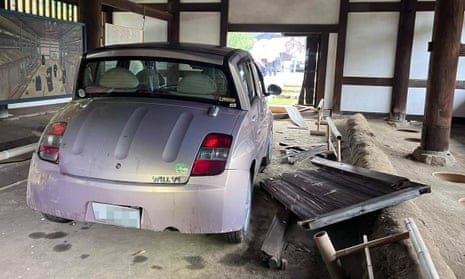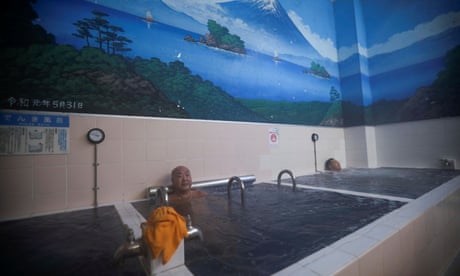Rare toad fight similar to landmark endangered species case



This photo provided by the Center for Biological Diversity shows a juba skipper, a subspecies of skippers, in the meadows at Baltazor Hot Spring in Humboldt County, Nev., on Sept. 13, 2021. The Center for Biological Diversity is suing to block a geothermal power plant near Denio, Nev., in an effort to protect the the bleached sandhill skipper, a close relative of the juba, which lives only in this area.
(Patrick Donnelly/Center for Biological Diversity via AP, File)
RENO, Nev. (AP) — The unusual circumstances that led to the U.S. Supreme Court’s landmark ruling on the Endangered Species Act in 1978 have not surfaced much since then.
But the stage is being set in Nevada for another potentially significant test of the nation’s premier wildlife protection law in a legal battle over a geothermal power plant with similarities to the precedent-setting fight over the snail darter and a dam in Tennessee nearly a half century ago.
Even smaller than that tiny species of perch, the endangered critter in Nevada is a quarter-sized toad found only in high-desert wetlands fed by underground springs on federal land.
Citing the potential threat posed by the water-pumping power plant, the Fish and Wildlife Service declared the Dixie Valley toad endangered on a temporary, emergency basis in April — only the second time in 20 years it’s taken such action.
And while the geothermal plant would generate electricity by spinning turbines with steam tapped from hot water beneath the earth instead of hydropower harnessed from rivers, both projects were born with the promise of producing some of the cleanest, renewable energy of their time.
Decades ago, Supreme Court Chief Justice Warren Burger seemed to anticipate the significance of the 1978 ruling and controversy that would follow when he authored the 6-3 majority opinion on the snail darter just five years after President Richard Nixon signed the Endangered Species Act into law.
“It may seem curious to some,” Burger said, “that the survival of a relatively small number of three-inch fish among all the countless millions of species extant would require the permanent halting of a virtually completed dam for which Congress has expended more than $100 million.”
“We conclude, however, that the explicit provisions of the Endangered Species Act require precisely that result,” he wrote in the case pitting the fish against the Tennessee Valley Authority.
More than four decades later, a similar scenario is unfolding 100 miles (160 kilometers) east of Reno where environmentalists and tribal leaders are trying to block the geothermal plant Ormat Technologies agreed to temporarily stop building in August — four months before it was scheduled to start producing power.
The Bureau of Land Management rushed to approve the Nevada project during the final days of former President Donald Trump's administration. But President Joe Biden's administration continues to defend it as part of its own agenda to replace fossil fuels with renewables.
Environmental groups insist they share the president’s goals to combat climate change. But they say the bureau ignored repeated warnings from state and federal wildlife biologists, the U.S. Navy and even its own experts about potential harm to the Dixie Valley toad.
“The expert agency, FWS, has determined that Ormat’s project is likely to cause extinction of the species — the very catastrophe the Endangered Species is intended to prevent,” the Center for Biological Diversity's lawyers wrote in recent filings in federal court in Reno.
The case already has made one trip to the 9th Circuit Court of Appeals and seems likely to return in the months ahead.
On Aug. 1, the appellate court refused to reinstate a previous injunction temporarily blocking construction, concluding further delay would make it “all but certain” Ormat would be unable to meet a Dec. 31 contract deadline.
Ormat, which already had invested $68 million, argued failure to meet the deadline would cost it another $30 million over 20 years and could jeopardize the project altogether. But later that day, Ormat agreed to suspend all work pending consultation between the Bureau of Land Management and the Fish and Wildlife Service.
41 Indian narrow-headed softshell turtle hatch in United States
Duration 1:20
View on Watch
Like the snail darter, the conflict differs from most battles over endangered species. They typically target broad government management plans for things like hunting grizzly bears, energy exploration near sage grouse habitat, logging around northern spotted owls and dam operations on Pacific salmon rivers. Less common are disputes over specific projects like TVA’s dam or Ormat’s geothermal plant.
Now, with the full force of the Endangered Species Act at play, Ormat's opponents are zeroing in on the section of the law the Supreme Court cited in prohibiting construction of the Tellico Dam in 1978.
“The case is analogous to (that case), where it was discovered late into the construction of a $100 million federal dam project that completing and operating the dam would eradicate a rare species of minnow,” environmental lawyers wrote Sept. 16.
They said Congress specifically mandated that federal agencies secure Fish and Wildlife Service approval before taking any action that could jeopardize a species to “prevent a situation like the one presented in TVA” and “avoid an outcome in which the only choices left to an agency are to violate the Endangered Species Act or scrap a virtually completed project.”
Last week, a judge granted a request from the Bureau of Land Management and Ormat to extend the deadline for their responses until Oct. 28.
Central to the Nevada dispute is uncertainty about effects groundwater pumping will have on surface water levels and temperatures.
Ormat insists water it would pump and return to the ground will come from a different aquifer than feeds the wetlands. But environmentalists say the bureau ignored every caution flag raised en route to the project's approval.
"BLM disregarded repeated warnings and objections from scientific experts and nearly every other federal and state agency involved in the project’s development, all of whom warned the project would likely dry up, or at the very least degrade, the hot springs that the Dixie Valley toad depends on for its survival, and cautioned that the project’s monitoring and mitigation plan would be ineffective.”
They cite internal documents that show:
— The Navy, whose Fallon Naval Air Station borders the site, characterized the plan as “inadequate and incomplete.”
— UFWS said it was “a plan describing the development of a plan.”
— BLM staff acknowledged the estimates were “rough guesses.”
In May, the BLM said informal consultation had started and produced a draft biological assessment concluding the project “is likely to adversely affect" the toad. But the FWS said the BLM's assessment was ”inadequate to initiate formal consultation ... missing major elements and lacking necessary analysis.”
The toad is in the spotlight, but similar disputes are brewing at other Nevada green energy projects.
The Center for Biological Diversity petitioned the FWS in August to list a rare butterfly where Ormat plans another geothermal project near the Oregon line.
Last October, the agency formally proposed listing a desert wildflower as endangered where Ioneer USA wants to dig a lithium mine halfway between Reno and Las Vegas for the mineral essential for electric car batteries.
And a U.S. judge has scheduled a hearing Jan. 5 in Reno for another lawsuit brought by conservationists, tribes and a rancher challenging a bigger mine Lithium Nevada plans near the Oregon line.
That case has focused primarily on threats to groundwater and cultural resources near a site where tribes say their ancestors were massacred by U.S. troops in 1865. But last month, Western Watersheds Project petitioned for endangered species listing of a tiny snail that lives nearby.
In the original 1978 snail darter case, the Supreme Court found “an irreconcilable conflict" between operation of the dam and compliance with the act.
After it ruled, Congress exempted the dam from the Endangered Species Act altogether. But the court's precedent remains, and it's now front and center in Nevada.
“It is clear from the Act’s legislative history," the 1978 ruling said, “that Congress intended to halt and reverse the trend toward species extinction — whatever the cost.”
Scott Sonner, The Associated Press











